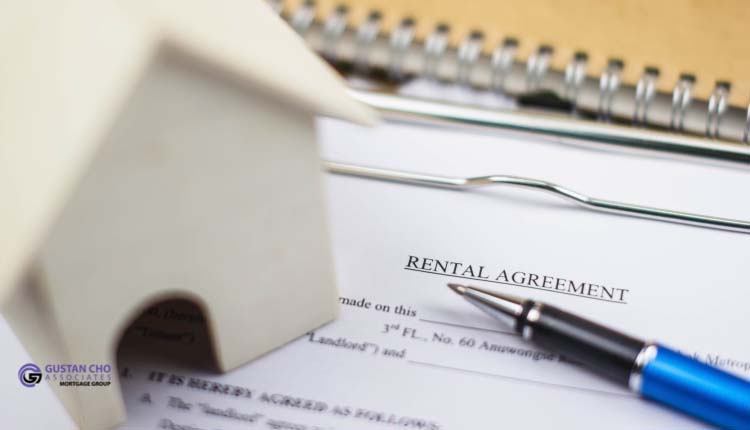Creating spaces where everyone can move, interact, and feel welcome isn’t just a design trend—it’s a baseline expectation. Whether you manage a storefront, design a community facility, remodel a home, or modernize an office, building a place accessible to all ensures dignity, independence, and safety for every visitor, resident, and employee. In practice, that means combining clear technical specs with universal design, smart technology, and sustainable choices—so the result works beautifully today and remains resilient tomorrow. This guide distills the essentials of building a place accessible to all, translating standards into plain-English steps you can act on.
What “Accessible” Really Means (and Where the Rules Apply)
In the U.S., two sets of guidance anchor physical accessibility:
- The 2010 ADA Standards for Accessible Design Apply to public entities (state/local governments) and most private businesses open to the public. These set minimum scoping and technical requirements for accessible routes, doors, bathrooms, ramps, signage, and more. ADA.gov
- ICC A117.1 (“Accessible and Usable Buildings and Facilities”): A technical standard referenced by model building codes. The 2017 edition refined many spatial requirements (e.g., turning spaces), complementing ADA rules used by code officials and designers. ICC Digital Codes+2ICC Digital Codes+2
For digital interfaces in physical spaces (such as kiosks, digital signage, and wayfinding websites), WCAG 2.2 is the current web accessibility benchmark (W3C Recommendation, October 5, 2023; consolidated specification published in 2024). It helps ensure digital experiences remain perceivable, operable, understandable, and robust. W3C+2W3C+2
Scope note: ADA is about minimums. Use universal design principles to go beyond. If you’re building a place accessible to all, design for real people, not just plan-check boxes.
Create a zero-step, barrier-free entr
Ramps, thresholds, and door clearances that work for all users
Universal Design Principles to Guide Every Decision
Universal design makes environments usable by the widest range of people without special adaptation. When building a place accessible to all, prioritize:
- Equitable use: Everyone shares the same entrance, route, and experience—no “back door” accessibility.
- Flexibility: Options for different heights, reaches, and handedness (e.g., adjustable counters, lever hardware).
- Simple & intuitive: Clear wayfinding, consistent signage, and obvious controls.
- Perceptible information: Combine text, icons, Braille/tactile, and good contrast.
- Tolerance for error: Guardrails, non-slip floors, and clear edge protection.
- Low physical effort: Doors and controls that are easy to operate; minimize long reaches.
- Size & space for approach: Provide adequate turning, passing, and knee/toe clearance.
These principles keep your project human-centered while you meet the letter of the standards when building a place accessible to all.
Site Arrival, Parking, and Drop-Off
A great user experience starts before the front door:
- Accessible parking: Meet local code for the number of accessible spaces (including van spaces). Guidance materials referencing A117.1 show typical ratios (e.g., ~2% of spaces in some contexts; confirm your local code). Ensure access aisles, proper signage, and curb ramps connecting to the route.
- Curb ramps: Use correct slopes and transitions; side flares (if used) have max slope limits to reduce tripping hazards in cross-traffic.
- Drop-off zones: Provide a level loading area with a curb ramp to the main route.
Do these well, and you’re already halfway to building a place accessible to all.
Exterior Routes & Ramps
- Continuous, accessible route: Exterior walks must connect parking/drop-off areas to entrances with adequate clear widths and passing spaces, especially if the path narrows. ICC A117.1 specifies where passing spaces are needed on long, narrow routes.
- Ramp slopes: For most projects, aim for a slope of 1 inch up for every 12 inches out. Make sure to have flat landings at the top, bottom, and at regular spots on long runs. Also, don’t forget edge protection and handrails if needed.
Ramps done right are foundational to building a place accessible to all outdoors.
Doors, Entrances, and Hardware
- Accessible Entrances: ADA scoping requires a majority of public entrances to be accessible in new construction; each tenancy and connected structure must have at least one accessible entrance.
- Clear width: Door openings must provide at least 32″ (815 mm) clear; deeper openings often need 36″. Measure with the door open 90°. Avoid revolving doors on accessible routes.
- Maneuvering clearance: Provide adequate approach and latch-side clearances.
- Operable parts: Choose lever handles and hardware that are usable with one hand, without requiring tight grasping or twisting. Place controls within typical reach ranges: 15″ to 48″ above the floor for unobstructed forward/side reach.
If entrances feel seamless for a first-time visitor, you’re creating a place that is accessible to all in the most visible way.
Interior Circulation: Hallways, Turning, and Flooring
- Corridor width & passing: Keep hallways wide; provide passing spaces where corridors are narrower than 60″ and long.
- Turning spaces: ICC A117.1-2017 increased the typical turning circle from 60″ to 67″ diameter (with more limited overlap into knee/toe spaces), and updated T-turn options. This gives people more real-world maneuvering room.
- Flooring: Choose hard, low-pile, or non-slip surfaces with predictable friction. Avoid thick carpets, high thresholds, and abrupt transitions.
Clear movement indoors is a hallmark of building a place accessible to all.
Restrooms and Changing Facilities
- Toilet room layout: Provide adequate clearances, turning space, and compliant compartments. Older A117.1 editions required 60″ width and 56″/59″ depths (depending on wall/floor-mounted WC) for wheelchair compartments; verify your jurisdiction’s adopted edition and any updates.
- Grab bars & heights: Position behind and beside the toilet; use proper heights and robust backing.
- Lavatories: Include knee/toe clearance, insulated pipes, and lever or sensor faucets within reach ranges.
- Showers/Changing Rooms: For multi-user facilities, offer roll-in showers with seats and hand showers. Provide family- or unisex rooms when possible.
Well-designed restrooms do more than check boxes—they demonstrate you’re building a place accessible to all with care.
Kitchens, Break Rooms, and Service Counters
- Counters & sinks: Provide knee clearance (typically 27″ min. high, 30″ min. wide, 19″ min. deep—confirm local standard) and keep the floor clear under at least one section.
- Appliances: Side-hinge ovens at reachable heights, drawer-based storage, reachable microwaves, and front-control cooktops increase usability.
- Service/transaction counters: Offer a lowered accessible segment and clear floor space for approach.
These choices keep shared amenities aligned with building a place accessible to all.
Take First Step Toward Making Your Dream A Reality
Apply Now And Get recommendations From Loan Experts
Signage, Wayfinding, and Digital Touchpoints
- Tactile/Braille signage: Provide tactile room IDs at consistent locations (latch side of door). Maintain legible contrast and non-glare finishes.
- Wayfinding: Use consistent icons, plain language, and logical numbering.
- Digital maps, kiosks, and websites: Align to WCAG 2.2 for perceivable, operable, understandable, robust content—even if the experience is “onsite.” WCAG 2.2 introduced new success criteria to enhance support for users with low vision, cognitive, and motor disabilities.
When digital and physical work together, building a place accessible to all becomes seamless.
Lighting, Acoustics, and Sensory Comfort
- Lighting: Minimize glare and provide sufficient vertical illuminance for faces and signs. Use controls at reachable heights.
- Acoustics: Reduce reverberation in large rooms; include assistive listening systems where speech intelligibility is critical.
- Color/contrast: Provide visual contrast at stair nosings, door frames, and signage backgrounds to aid navigation for individuals with low vision.
Sensory choices add depth to building a place accessible to all—often at low cost.
Emergencies and Egress
- Areas of refuge: Where required, provide protected waiting areas with two-way communication.
- Visual & audible alarms: Combine strobe and audible alerts; place within reach ranges for testing/maintenance.
- Evacuation plans: Train staff and post inclusive procedures that cover assistance for wheelchair users and others.
Preparing for “what if” is essential when building a place accessible to all.
Smart Technology That Actually Helps
- Hands-free entries: Automatic door operators and touchless access reduce barriers to entry.
- Voice and app control: Lights, blinds, thermostats, and intercoms are controllable via voice or mobile app, helping users with limited reach or dexterity.
- Contextual cues, such as beacons or QR-code wayfinding that directs users to a smartphone, can complement tactile signs—supporting the WCAG principles.
Thoughtful tech elevates building a place accessible to all beyond minimums.
Sustainability That Supports Accessibility
- Non-slip, low-VOC materials: Improve indoor air quality and reduce falls.
- Energy-efficient lighting: Better light with lower operating cost.
- Permeable paving: Reduces puddles and ice patches on routes, improving mobility and safety.
Green choices can strengthen the user experience when building a place accessible to all.
Budgeting & Typical Cost Ranges (Ballpark)
Actual costs vary by location and scope, but planning ranges help:
- Grab bars (supply + install): ~$150–$400 each
- Door operators: ~$2,000–$5,000 per door
- Ramp retrofits: ~$2,000–$8,000+, depending on length/materials
- Restroom remodel (per multi-user room): Highly variable; low five-figures and up
- Wayfinding/signage package: From a few thousand dollars for small sites to more for campuses
Setting aside a line item for accessibility avoids last-minute redesigns. It supports building a place accessible to all without overruns.
Permits, Compliance, and Professional Help
- Coordinate early: Meet with your architect, contractor, and code official while schematic plans are still flexible.
- Adopt conservative targets: Where ADA or ICC A117.1 offers ranges, aim for more generous space—especially turning and passing areas. (A117.1-2017 increased turning circles to 67″, tightening overlap allowances, which is more realistic for many users.)
- Document decisions: Keep product cut sheets, shop drawings, and field photos tied to code sections; this eases inspections.
- Post-occupancy check: Walk the site with users (including those using wheelchairs, canes, and strollers) before opening.
A sound process is part of building a place accessible to all, not just the end result.
Quick Spec Reference (U.S. minimums & common targets)
Always verify the edition adopted in your jurisdiction and any local amendments.
- Door clear width: To ensure accessibility, doors should have a clear width of at least 32 inches. If the opening is deeper, aim for a clear width of 36 inches. Avoid any projections that are below 34 inches in height. Please note that revolving doors do not count as accessible routes.
- Reach ranges (unobstructed): 15″–48″ above the floor for forward and side reaches (with depth limits).
- Ramps: Ramps should have a slope of about 1:12 and include safe landings and edge protection. Please check the rules for handrails and passing.
- Routes & passing: Provide passing spaces along narrow routes at required intervals.
- Turning space: Plan for a 67″ diameter circle under ICC A117.1-2017, where applicable.
- Entrances: The Majority of public entrances are accessible in new construction; each tenancy must have at least one accessible entrance.
These anchors are building a place accessible to all, grounded in verifiable specifications.
Room-by-Room Highlights
Entry & Lobby
- Flush thresholds (≤ ½” where permitted), weather mats secured, and high-contrast door frames.
- Clear sightlines to the reception area; provide an accessible service counter.
Corridors & Stairs
- Consistent lighting; contrasting nosings on stair treads; tactile floor cues where helpful.
Restrooms
- Provide compliant stalls and turning space; mount accessories in reach ranges; choose lever or sensor faucets.
Kitchens/Break Rooms
- At least one accessible work surface and sink with clear knee/toe space; drawer storage; reachable appliances.
Meeting Rooms
- Flexible seating layouts, power/data accessible without tripping hazards, and assistive listening where needed.
Outdoor Areas
- Firm, stable, slip-resistant surfaces; ramped transitions; good drainage to avoid puddles.
Each of these touchpoints helps build a place that is accessible to all in everyday use.
Budget smart with an accessibility roadmap
Phase upgrades, pick high-impact wins, and avoid costly rework
Accessibility + Digital: Don’t Forget WCAG 2.2
- Maps & directories online: Ensure your “Plan Your Visit” pages meet WCAG 2.2, which introduced additional criteria to support low vision, cognitive, and motor needs—particularly for touch devices.
- Kiosks and QR codes: Provide alternatives for people who can’t use drag gestures or small targets (WCAG 2.2 improves guidance on target sizes and avoiding dragging).
When digital entry points are accessible, you’re truly building a place accessible to all across channels.
Stakeholders and Training
Spaces are only as accessible as the people who operate them:
- Front-of-house: Train staff to recognize when to offer (not force) help, and how to operate door operators, listening systems, and evacuation chairs.
- Maintenance: Keep floor transitions repaired, door closers tuned, signage intact, and lighting consistent.
- Feedback loop: Invite users to report barriers and celebrate fixes.
Teams that understand the “why” embody building a place accessible to all long after ribbon-cutting.
Mini-Checklist: Audit Your Space
Use this as a starter list for building a place accessible to all or improving an existing facility:
- Parking/drop-off connected to a continuous accessible route (ramps per 1:12 guideline).
- The majority of public entrances are accessible, with each tenancy having at least one accessible entrance.
- Doors provide ≥32″ clear (or 36″ where depth dictates); lever hardware; correct maneuvering clearances.
- Corridors allow passing; turning spaces provided (consider 67″ circles per A117.1-2017).
- Restrooms with compliant stall sizes, grab bars, lavatory clearances, and reachable accessories.
- Service counters with an accessible segment; break rooms with reachable appliances and knee space.
- Signage: tactile/Braille at consistent locations, with good contrast and non-glare.
- Emergency: visual+audible alerts; areas of refuge where required; posted inclusive plans.
- Digital touchpoints aligned to WCAG 2.2 (maps, kiosks, QR wayfinding).
- Maintenance & training plan in place.
Even small wins move you closer to building a place accessible to all.
Conclusion
When you commit to building a place accessible to all, you’re doing more than passing inspections—you’re shaping experiences that work for people across abilities, ages, and contexts. Start with arrival and entrances, setting generous clearances, choosing intuitive hardware, respecting reach ranges, and ensuring lighting and signage for clarity. Then connect the physical with the digital through WCAG 2.2. The result is a resilient, future-friendly environment—and a clear signal that everyone belongs. That is the real promise of building a place accessible to all.
Borrowers who need a five-star national mortgage company licensed in 50 states with no overlays and who are experts on building a place accessible to all, please contact us at 800-900-8569, text us for a faster response, or email us at alex@gustancho.com.
Frequently Asked Questions About Building a Place Accessible to All:
What’s the Single Most Important First Step in Building a Place Accessible to All?
Start with the arrival experience: parking, drop-off, and a continuous accessible route to an accessible entrance. Fixing bottlenecks here unlocks everything else.
Do I Need to Replace All Doors When Building a Place Accessible to All?
Not always. You may widen frames only where needed, change hardware to levers, tune closers, and ensure ≥32″ clear width (or 36″ for deeper openings), per ADA.
How Steep Can My Ramp be When Building a Place Accessible to All?
Design to 1:12 with proper landings and edge protection; longer runs need rest platforms.
Which Turning Space Should I Use When Designing a Place That is Accessible to All?
Under ICC A117.1-2017, plan for 67″ diameter circles (larger than older 60″), or compliant T-turns—better in tight rooms.
Do Digital Maps Matter in Building a Place Accessible to All?
Yes. Wayfinding sites and kiosks should meet WCAG 2.2, which enhances support for individuals with low vision, cognitive, and motor impairments.
How do I Keep Progress Going After Opening?
Create a maintenance checklist and feedback channel. Accessibility is a process—building a place accessible to all isn’t “set-and-forget.”
This article about “Building a Place Accessible to All: A Practical Guide” was updated on October 29th, 2025.
Get an expert accessibility walkthrough
On-site or virtual audit with a prioritized punch list of fixes









